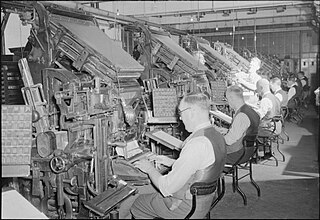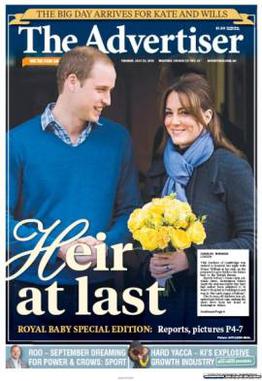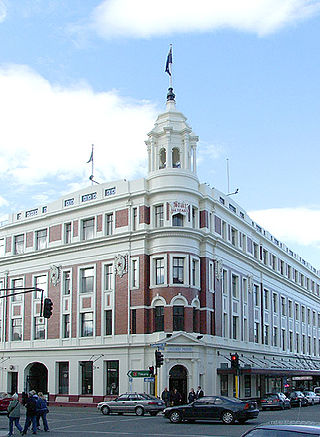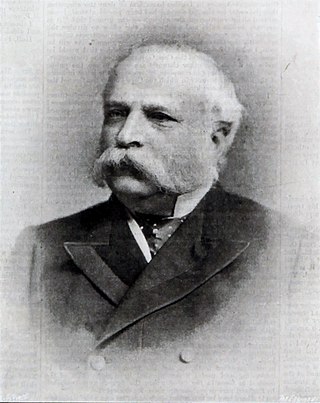
The history of British newspapers dates to the 17th century with the emergence of regular publications covering news and gossip. The relaxation of government censorship in the late 17th century led to a rise in publications, which in turn led to an increase in regulation throughout the 18th century. The Times began publication in 1785 and became the leading newspaper of the early 19th century, before the lifting of taxes on newspapers and technological innovations led to a boom in newspaper publishing in the late 19th century. Mass education and increasing affluence led to new papers such as the Daily Mail emerging at the end of the 19th century, aimed at lower middle-class readers.

The Herald Sun is a conservative daily tabloid newspaper based in Melbourne, Australia, published by The Herald and Weekly Times, a subsidiary of News Corp Australia, itself a subsidiary of the Murdoch owned News Corp. The Herald Sun primarily serves Melbourne and the state of Victoria and shares many articles with other News Corporation daily newspapers, especially those from Australia.

The Advertiser is a daily tabloid format newspaper based in the city of Adelaide, South Australia. First published as a broadsheet named The South Australian Advertiser on 12 July 1858, it is currently a tabloid printed from Monday to Saturday. The Advertiser came under the ownership of Keith Murdoch in the 1950s, and the full ownership of Rupert Murdoch in 1987. It is a publication of Advertiser Newspapers Pty Ltd (ADV), a subsidiary of News Corp Australia, itself a subsidiary of News Corp. Through much of the 20th century, The Advertiser was Adelaide's morning broadsheet, The News the afternoon tabloid, with The Sunday Mail covering weekend sport, and Messenger Newspapers community news. The head office was relocated from a former premises in King William Street, to a new News Corp office complex, known as Keith Murdoch House at 31 Waymouth Street.

The Courier-Mail is an Australian newspaper published in Brisbane. Owned by News Corp Australia, it is published daily from Monday to Saturday in tabloid format. Its editorial offices are located at Bowen Hills, in Brisbane's inner northern suburbs, and it is printed at Murarrie, in Brisbane's eastern suburbs. It is available for purchase throughout Queensland, most regions of Northern New South Wales and parts of the Northern Territory.

The Otago Daily Times (ODT) is a newspaper published by Allied Press Ltd in Dunedin, New Zealand. The ODT is one of the country's four main daily newspapers, serving the southern South Island with a circulation of around 26,000 and a combined print and digital annual audience of 304,000. Founded in 1861 it is New Zealand's oldest surviving daily newspaper – Christchurch's The Press, six months older, was a weekly paper until March 1863.
The Birmingham Post is a weekly printed newspaper based in Birmingham, England, with distribution throughout the West Midlands. First published under the name the Birmingham Daily Post in 1857, it has had a succession of distinguished editors and has played an influential role in the life and politics of the city. It is currently owned by Reach plc. In June 2013, it launched a daily tablet edition called Birmingham Post Business Daily.

The Argus was an Australian daily morning newspaper in Melbourne from 2 June 1846 to 19 January 1957, and was considered to be the general Australian newspaper of record for this period. Widely known as a conservative newspaper for most of its history, it adopted a left-leaning approach from 1949. The Argus's main competitor was David Syme's more liberal-minded newspaper, The Age.

The Pittsburgh Post-Gazette, also known simply as the PG, is the largest newspaper serving metropolitan Pittsburgh, Pennsylvania. Descended from the Pittsburgh Gazette, established in 1786 as the first newspaper published west of the Allegheny Mountains, the paper formed under its present title in 1927 from the consolidation of the Pittsburgh Gazette Times and The Pittsburgh Post.

The Coventry Telegraph is a local English tabloid newspaper. It was founded as The Midland Daily Telegraph in 1891 by William Isaac Iliffe, and was Coventry's first daily newspaper. Sold for half a penny, it was a four-page broadsheet newspaper. It changed its name to the Coventry Evening Telegraph on 17 November 1941. On 2 October 2006, the Telegraph simply became the Coventry Telegraph, reflecting its switch to a morning publication.
The Star, often known as the Sheffield Star, is a daily newspaper published in Sheffield, England, from Monday to Saturday each week. Originally a broadsheet, the newspaper became a tabloid in 1993. The Star, the weekly Sheffield Telegraph and the Green 'Un are published by Sheffield Newspapers Ltd, based at The Balance in Pinfold Street in Sheffield City Centre.

The Swindon Advertiser is a daily tabloid newspaper, published in Swindon. The newspaper was founded in 1854, and had an audited average daily circulation at the end of 2017 of 8,828.
The Herald was a morning and, later, evening broadsheet newspaper published in Melbourne, Australia, from 3 January 1840 to 5 October 1990, which is when it merged with its sister morning newspaper The Sun News-Pictorial to form the Herald-Sun.

The history of newspapers in California dates back to 1846, with the first publication of The Californian in Monterey. Since then California has been served by a large number of newspapers based in many cities.

Sir William Christopher Leng, known as W. C. Leng was a newspaper publisher in Sheffield.
The Eastern Morning News was a newspaper based in Kingston upon Hull, East Riding of Yorkshire, England. Founded by William Saunders in 1864, it ceased publication in November 1929.
The Morning Sun is a newspaper published in Pittsburg, Kansas, United States. Though its history dates to the 1880s, it has been known as the Morning Sun since 1973. It was a seven-day daily paper, but decreased to five print editions a week as of April 2017. The paper was purchased by Pittsburg Publishing LLC in September 2021, and is currently published five days a week (Tue-Sat).
The Otago Witness was a prominent illustrated weekly newspaper in the early years of the European settlement of New Zealand, produced in Dunedin, the provincial capital of Otago. Published weekly, it existed from 1851 to 1932. The introduction of the Otago Daily Times, followed by other daily newspapers in its circulation area, led it to focus on serving a rural readership in the lower South Island, where poor road access prevented newspapers being delivered daily. It also provided an outlet for local fiction writers. It is notable as the first newspaper to use illustrations and photographs and was the first New Zealand newspaper to provide a correspondence column for children, which was known as "Dot's Little Folk". Together with the Auckland-based Weekly News and the Wellington-based New Zealand Free Lance it was one of the most significant illustrated weekly New Zealand newspapers in the 19th and early 20th centuries.
The Telegraph was a newspaper in Adelaide, South Australia, founded in 1862, and merged with The Express to become The Express and Telegraph, published from 1867 to 1922.
The New Zealand Times was a New Zealand daily newspaper published in Wellington from 1874 to 1927.
"Press Gazette", 21 June 2002.











